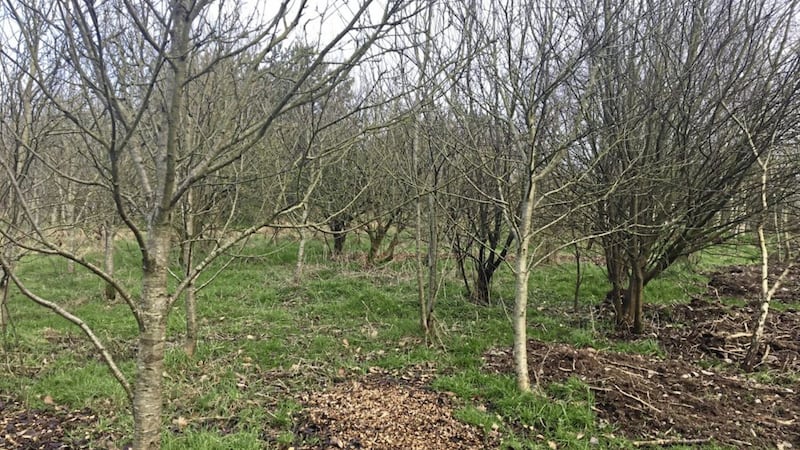IRELAND is one of the most deforested regions of Europe, with around 10 per cent of woodland compared to an average of 30 per cent in the rest of the continent. Once the whole island was covered by huge forests, but now just a few remnants huddle in scattered clusters.
Patches of a massive woodland that once spread out between Bangor and Downpatrick in Co Down can still be seen along the banks of the River Quoile and at Clandeboye. However, like the rest of the country, bland stretches of agricultural land where cattle and sheep graze and crops are grown now dominate the rural landscape.
But in among the open fields, newly planted woodlands are starting to appear. Individuals, community groups, grassroots schemes and government-backed initiatives have seen small copses and substantial swathes of forest established in places where none existed just a few years ago.
A site spread over three fields close to the Glasswater River on the side of gently sloping field just outside Crossgar was bought by the Woodland Trust in 2000 and planted with oak and ash in dry areas, while willow and alder were planted in the lower, boggy areas.
Community involvement was encouraged and the woodland is now well established and laid out with a series of not too challenging walking trails. A pond was created in 2002, which draws on water from two wet areas and this has helped to expand biodiversity within the site.
The pond and the grasses and shrubs around it attract insects and these in turn draw in birds to feed on them and the smaller birds will bring in bigger predators – I saw a buzzard on a gatepost when I walked at Glasswater during the week.
The focus for re-establishing woodlands is now on our native species – oak, birch, mountain ash, willow and alder – and other broadleaf trees such as beech, first introduced to Ireland around 400 years and which behave in the same way as our indigenous trees.
The widespread planting of spruce in recent decades is now regarded has having had a negative impact on our environment, as they do not provide suitable habitats for native insects, birds and mammals and do not offset carbon emissions.
The deforestation of Ireland was driven by a growing population and the demand for more agricultural land, but this actually went against our natural instincts. Long before humans understood the science that tells us how vital trees are to our very existence on this planet – turning carbon dioxide into oxygen – there was an instinctive understanding that woodlands should be preserved.
The poet and novelist Robert Graves, who immersed himself in Celtic mythology, suggested that tree lore from Ireland, Scotland and Wales contained hidden code that unlocked the long forgotten religious practices and rituals of druid and other pre-Christian pagans.
Forests were regarded in the Celtic world as sacred places: under the Brehon laws set down in the 7th century and which operated until the 17th century, there were penalties imposed on people who harmed "the lords of the wood". These were defined as Ireland's seven most important trees: oak, hazel, holly, yew, ash, Scots pine and apple.
I have planted my own lords of the wood over the past eight years in what was once a small boggy field bordered by a stream and surrounded by agricultural land used mostly for cattle grazing.
I didn't put in any ash, although long-established ash trees are already on the land and so far have been unaffected by ash die-back. I also put in alder, willow, birch and rowan (mountain ash) as well as beach growing side by side in my fledgling forest of 200 trees, which will hopefully be around for centuries to come.








